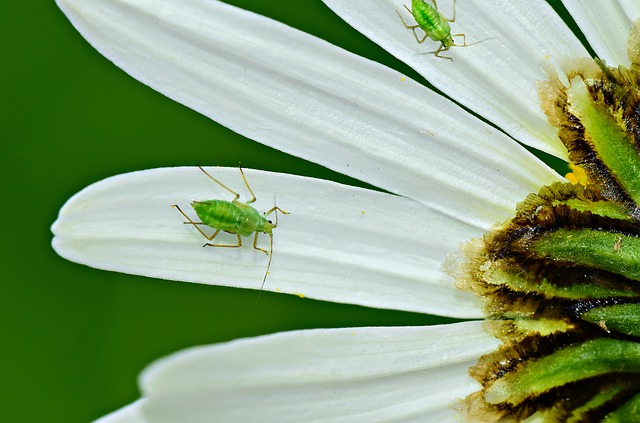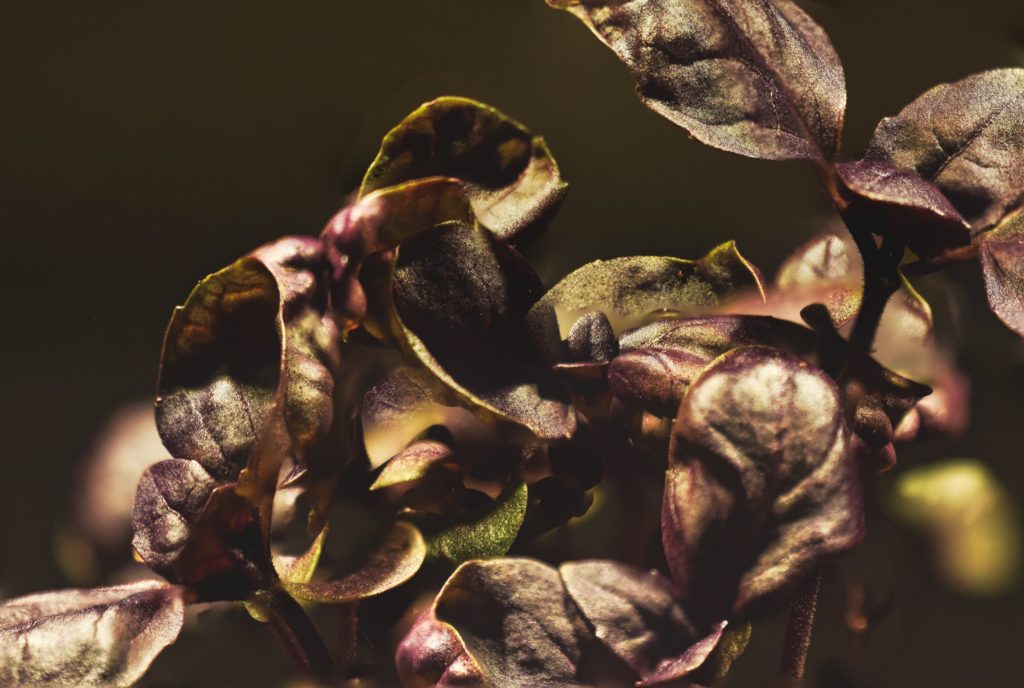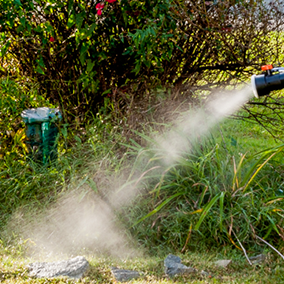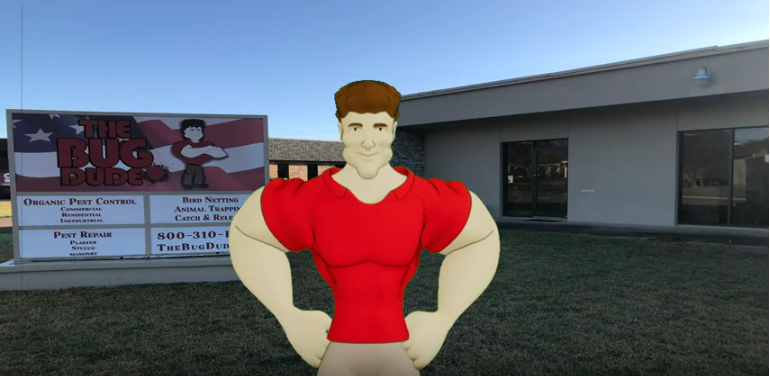
“Love is composed of a single soul inhabiting two bodies.”
– Aristotle
Valentine’s Day has a long and varied history, with its true origins unknown. Not only are there at least 3 different saints named Valentine/Valentinus upon which the holiday could have been based, but it’s also believed that the celebration date being in mid-February was chosen specifically in an effort to “Christianize” the pagan holiday “Lupercalia”. Lupercalia was a fertility festival largely in honor of the Roman god of agriculture, Faunus. It only seems appropriate then that we turn our attention to a tiny insect this month that is known for its prolific reproduction and its impact on agricultural and horticultural plants, the aphid. This tiny insect also brings with it a particularly unique life cycle which not only includes reproduction via coupling, but also solitary reproduction, which means that whether you find yourself in a couple or single this Valentine’s Day, the aphid fits the bill.

How Many Kinds of Aphids Are There?
Not only are there over 4,000 species of aphids worldwide, but of those 4,000, more than 250 species feed on horticultural and agricultural crops. With that kind of diversity, it’s no surprise that there are a number of different species of aphids in Texas, the most common of which tend to attack landscape plants. A few of the most common species are: the Cotton or Melon Aphid, the Green Peach Aphid, the Crape Myrtle Aphid, and the Oleander Aphid. As you may have noticed, many aphid species are named after their preferred host plant, but they all do share the same nickname: “plant lice”.
What do Aphids Look Like?
With so many aphid species worldwide, it’s little wonder that their physical characteristics can vary quite a bit from species to species. They can be pear-shaped, oval, globular, or narrow-bodied and can range in color from black/gray to red, orange, yellow, green, brown, or blue-green and can sometimes have markings or appear wax-covered. However, there are a few characteristics that are true for all aphids: they are small, ranging from 1/16” to 1/8” long, have soft-bodies, antennae, and a stylus mouth part used to pierce and suck sap from plants. Most aphids also have a couple tubes in the rear of the abdomen (called cornicles) that secrete a type of honeydew called cornicle wax. In addition, some aphids will have wings and some will not (more on this in the section “How Does an Aphid Infestation Happen?”).
How Does an Aphid Infestation Happen?
In order to understand how an aphid infestation can take hold of your landscaping and garden, you only need to look at the complex, and uncommon life cycle of this insect that allows this pest to be quite prolific (they reproduce faster than any other insect). Not only do many aphids follow a relatively standard life cycle wherein they reproduce sexually and deposit their fertilized eggs, which will then go through a basic metamorphosis (overwintering as eggs, growing into nymphs, and emerging as either winged or wingless adults), but they can also reproduce via parthenogenesis (reproduction without mating) and will give birth to live female young; these young are clones of their mother. This variable method of reproduction allows for generations of new aphids to be born quickly and thus grow exponentially. Generally, aphids reach sexual maturity in about 4 to 10 days and are then capable of reproducing for about the following 3 weeks (the average lifespan of an adult is about 1 month); this means that there will be overlapping generations of these insects reproducing via parthenogenesis. Not only are the fast-growing numbers a concern for your plants, but they can also increase the rate at which these pests develop resistance to insecticides.
These insects are still even more adaptable, sometimes giving birth to winged aphids, which can make an infestation even more difficult to control. The winged version of this pest tends to occur for one of two main reasons: the need to travel or as part of the reproductive cycle for some species. When a plant becomes too crowded with aphids, the next generation to be born will be winged so that they can move to a new host plant where there will be plenty of food and space for the increasing numbers. Though that is the most common reason to see winged aphids, they are also part of some aphid species’ standard reproductive cycle. In this case, the pests live on one plant and reproduce on a separate plant, so they need to have wings in order to move from one plant to the other. Because of this movement, you can sometimes find yourself tricked into thinking the infestation has gone away because it’s no longer on the plant you had been focused on, but in reality the insects have simply moved and will come back in even greater numbers before you know it.

Are Aphids Dangerous?
Though aphids are not harmful to humans as they do not bite or sting us, they can be quite devastating to the plants they reside and feed upon. Their potential for plant damage is three-fold: damage done while feeding, causal damage, and viral damage.
Damage Done While Feeding: when aphids remove the sap from the plant tissue (phloem) to feed upon, it not only inherently weakens the plant, but some species also leave behind toxic salivary secretions in the plant. These two factors will lead to stunted plant growth, deformed and discolored leaves/fruit, potential for leaf loss, and can cause galls to form on the plant.
Causal Damage: it’s common for aphid species to secrete a sugary substance called honeydew (or more specifically, cornicle wax) on the leaves and other plant parts of thelir host plant. This cornicle wax is a prime host for the “sooty mold” fungus, which colonizes on the surfaces covered by the honeydew, blocking out the sunlight to that section of the plant, ultimately preventing it from taking in the sunlight and leading to plant damage.
Viral Damage: aphids are a major vector when it comes to spreading diseases among plants. Not only can they transmit dozens of viruses from a diseased plant into a healthy plant in only a matter of seconds, they can also host viruses that go through a latency period within the host insect itself. The transmitted viruses are acquired instantly on the aphid’s mouth parts when it feeds on an infected plant, and are easily spread to new plants when the aphid feeds on them for its next meal. Even worse, many of the diseases these pests can spread are incurable, making viral damage the most worrisome effect of an aphid infestation.
How can you Prevent Aphids?
When it comes to aphids, putting in a little advance work to discourage them from making your plants their home can go a long way to keeping a significant infestation at bay. Here are a few tips on how to prevent or minimize an aphid attack:
- Remove weeds that could be used by the insect for a reproduction site.
- Use insect nets to cover crops.
- Avoid excessive use of nitrogenous fertilizer.
- Remove any plant residue/waste.
- Grow banker/barrier plants around the important plants you wish to save from damage; these banker plants are plants that are not susceptible to the viruses aphids carry so when the insect feeds on them, the virus is safely deposited into a plant it won’t effect. You can also intermingle plants in your garden that naturally repel aphids (i.e. garlic, chives, leeks, marigolds, and catnip).

How do you Eliminate Aphids?
If you have found yourself facing an aphid infestation on your plants, it’s time to give Mid-Cities Pest Control a call at 1-800-310-BUGS to get a technician out to combat the issue. Since they can reproduce quickly, time is of the essence, which means that at the first signs of an aphid issue, you need to call so that Mid-Cities Pest Control can send out an experienced technician to evaluate the infestation and determine the best course of treatment. Since aphids cause damage to the plant, which is ultimately the vehicle through which the pesticide will reach the insect, it takes a knowledgeable hand to know how to make treatment effective, and even more so, to know which products to use to successfully eliminate the target insect.
Though aphids are a wonderfully unique pest, they are also very dangerous to landscape plants and crops, and need to be carefully monitored and eliminated when evidence arises that they have settled on your property. So show your plants some love this Valentine’s Day and call The Bug Dude at the first sign of an aphid infestation.
Additional Resources:
“Aphids – in detail” – Canna
“Aphids in Texas Landscapes” – Texas A&M AgriLife Extension
“History of Valentine’s Day” – History.com Editors
Author Bio: Alissa Breach has been gaining knowledge and experience around pest control concerns over the last 11 years while working for Mid-Cities Pest Control. She has a creative writing BA from UW-Madison and is always pursuing new and interesting writing projects.




